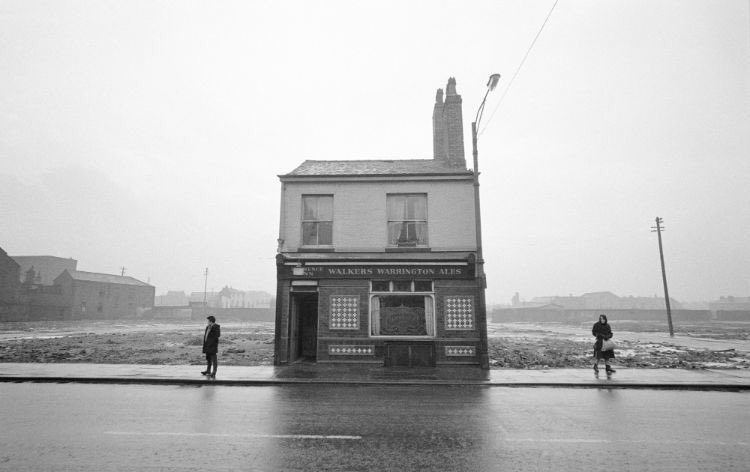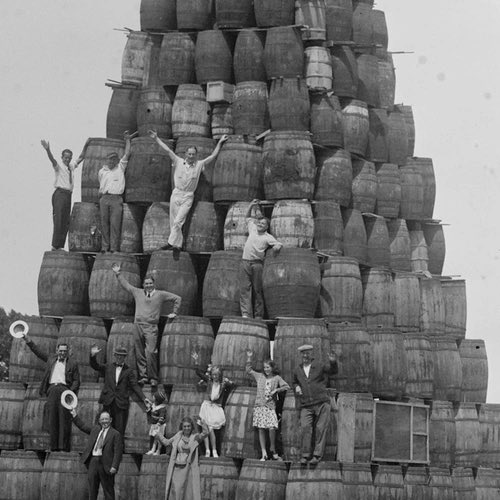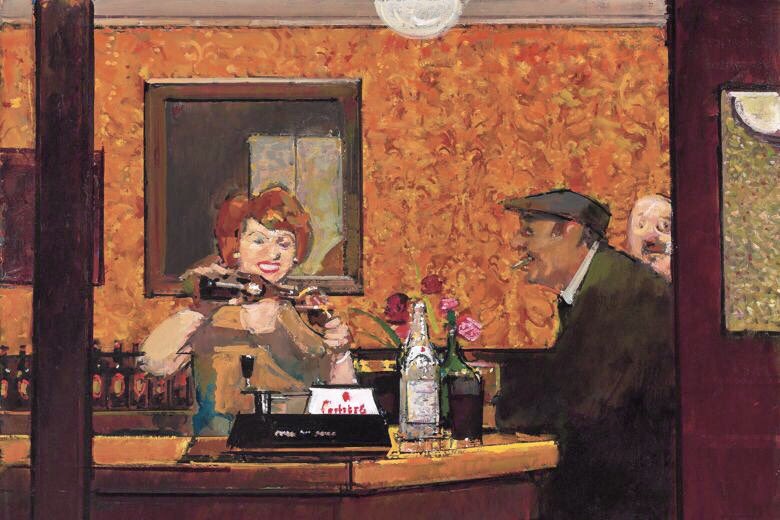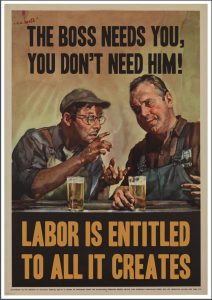 May two-four. Back again. I explained it back in 2014 when I included the photo to your right (my left) of Bob and Doug McKenzie who were Canada’s #1 export forty years ago and whose 1983 movie, Strange Brew, is the last cultural statement about beer before microbrewing struck in earnest. Even though the movie isn’t set on the Victoria Day holiday in the second half of May, you can see many aspects of our drunken mildly retro-pro-monarchist celebrations replayed in Canadian homes as well as at campsites and cottages throughout the land this weekend as people feign gardening and practice inebriation. And it’s a big year for our top dog, our numero uno, our favourite anti-Nazi. Speaking of which… you know what broke? That cap thing on my whippersnipper that keeps the weedwhacker’s string coil in place. How the hell does that break? Spool went flying and the lawn’s all half haggy still. Didn’t so much break as ‘sploded. Now I have to hunt down a replacement lawn trimmer line cap or I have to buy a whole new thing-a-ma-jig. Pray for me.
May two-four. Back again. I explained it back in 2014 when I included the photo to your right (my left) of Bob and Doug McKenzie who were Canada’s #1 export forty years ago and whose 1983 movie, Strange Brew, is the last cultural statement about beer before microbrewing struck in earnest. Even though the movie isn’t set on the Victoria Day holiday in the second half of May, you can see many aspects of our drunken mildly retro-pro-monarchist celebrations replayed in Canadian homes as well as at campsites and cottages throughout the land this weekend as people feign gardening and practice inebriation. And it’s a big year for our top dog, our numero uno, our favourite anti-Nazi. Speaking of which… you know what broke? That cap thing on my whippersnipper that keeps the weedwhacker’s string coil in place. How the hell does that break? Spool went flying and the lawn’s all half haggy still. Didn’t so much break as ‘sploded. Now I have to hunt down a replacement lawn trimmer line cap or I have to buy a whole new thing-a-ma-jig. Pray for me.
 Now… to the beer news. First up, a set of photos posted by the Glasladies Beer Society of a recent Glasgow beer fest set up in what looks like a somewhat permanent outdoor space. Being who I am, a child of children of the Clyde, the event looks like a mass gathering of aunties and uncles and masses of cousins. The use of steel container boxes is interesting as a relatively cheap but cheery but secure set up. Looks like it was held at the Glasgow Beer Works in the Queenslie Industrial Estate. This may be a common site for some of you but sometimes that’s still remarkable.
Now… to the beer news. First up, a set of photos posted by the Glasladies Beer Society of a recent Glasgow beer fest set up in what looks like a somewhat permanent outdoor space. Being who I am, a child of children of the Clyde, the event looks like a mass gathering of aunties and uncles and masses of cousins. The use of steel container boxes is interesting as a relatively cheap but cheery but secure set up. Looks like it was held at the Glasgow Beer Works in the Queenslie Industrial Estate. This may be a common site for some of you but sometimes that’s still remarkable.
Next, Ron wrote a piece he titled “The Future of Mild” which serves as an interesting counterpoint to the fan friendly writings on the style mentioned two weeks ago. Ron provides an interesting set of thoughts about Mild itself and how styles may or may not make a comeback:
I’d love to go to Cross Green and drink 10 pints of Tetley’s Mild again. But it isn’t going to happen. The world has moved on. Beer styles come and go. And almost never return. I’ll just cherish the memories of a time that’s gone forever. Like a Porter drinker in the 1940s. The same fate, incidentally, awaits Pilsner and IPA. All styles have their day.
The fate of Mild has been formed he suggest as “it’s harder to throw all sorts of random shit into a Dark Mild.” That would seem to be where we are at. The post also lead to an interesting considered discussion on the nature of revivals. Jeff wrote:
…I wonder if a style that was once quite popular ever came back as a major style, perhaps not as popular as it was during its heyday, but with significant production. It’s probably happened, but I suspect it’s very, very rare. Once fashions change, styles sunset.
TBN reminded us of the classic example of style revival – Hoegaarden. I expect this is as much framed by the word “style” and its imposition limiting structure but the entire micro (1980-2003)) and craft eras (2003-2016) were based on revival of lost beers. Hoppy malt rich ales were descendants of earlier strong ales like Ballantine IPA and Dominion White Label as much as they were clones of imports. So… revivals common enough in the days when brewing was not so wound up with novelty and amnesia. We always have to remember how quickly we forget. As recent at 2011, SNPA’s place in the pantheon was still somewhat speculative. Now, of course, it was always the source of all things including those that came before it – thanks to the nation’s PR professionals!
 Speaking of perhaps one revival or perhaps homage that has not lasted, one bit of news that I was a bit surprised to learn about this week was how St. Joseph’s Abbey of Spencer, Massachusetts is no longer brewing its beer. This was all the news in 2015 and I reviewed their first beer as you can read here. The monks announced:
Speaking of perhaps one revival or perhaps homage that has not lasted, one bit of news that I was a bit surprised to learn about this week was how St. Joseph’s Abbey of Spencer, Massachusetts is no longer brewing its beer. This was all the news in 2015 and I reviewed their first beer as you can read here. The monks announced:
After more than a year of consultation and reflection, the monks of St. Joseph’s Abbey have come to the sad conclusion that brewing is not a viable industry for us and that it is time to close the Spencer Brewery. We want to thank all our customers for their support and encouragement over the years. Our beer will be available in our regular retail outlets, while supplies last. Please keep us in your prayers.
Jordan thought it a particularly worrying development based on their low labour expenses. Greg reported that the equipment was already listed for sale before the announcement. I gratuitously added the 2015ish image up there from the celler’s stash for Stan. Pretty sure the bottle has move about six inches in seven years.
 Des generated a wonderful cascade of comments related to cellered casks with this big barrelled beery buttery – including these cautionary ones:
Des generated a wonderful cascade of comments related to cellered casks with this big barrelled beery buttery – including these cautionary ones:
Not being funny, but going on that photo, “immaculate” is a strong word. Serviceable, cleaner than many, maybe. And as I’m sure has been pointed out, a 36 (massing the best part of 200kg) is a H&S nightmare. You romantic.
Note: please don’t send out bleggy emails saying “ I don’t have limitless cash on hand to subsidize this project, but it’s reality nonetheless. I need at least [XXX number of] paid subscribers…” Listen to the wind… the marketplace of ideas is speaking… write for joy or get a job to support your hobby interest in booze.
Boak and Bailey elaborated something at their Patreon widget-a-thing that was evident in their (lovely and highly recommended) account of Ray’s out for hike and stopping at rural pubs with pals:
…at least part of the joy we took in drinking it on this occasion must be down to having “earned it”. The same goes for that first beer of the weekend, after a tough week at work. Or, as many people have observed, almost any mediocre lager you drink on holiday. How do you compensate for this effect? Well, you don’t, unless you’re a Top International Beer Judge. Instead, you report the context when you give notes on a specific instance of drinking a specific beer. And you make judgements about the overall quality of a beer based on mutliple encounters in multiple contexts. A beer that tastes good every time you bump into it is probably a good beer, full stop.
I wonder if we have become so enthralled with these beer judging events for hobbyists that we miss the obvious – that those beers actually do taste good in those contexts. And that judging contexts make beer taste bad. Because they are geared to ensure failure. Because that is what institutionalizing human experience does, makes you distrust and then outsource your own experience of life. Stop feeling bad because someone who has a certificate for passing the equivalent of a grade 11 history class says so.* Not to suggest TBN is not correct when he explains “Beer is weird. You’re lucky to have me here, putting things straight.” It is. We are.
Handy example: print off and cut into separate burger and beer images. Throw all in air and match the beer with the nearest burger. Equally valid. Every. Time.
Rolling Stone put out a story about beer prices this week under their “Culture Council” tab, not something I have notice from them in all my years at the coal face. The author, Kevin Weeks of Anderson Valley Brewing (who actually follows me on Twitter so I feel extra bad for not noticing before), argues interestingly that any increased costs faced by brewers are likely not going to justify the level of price increases that consumers are going to see on the shelf from the big brewers so…
For the smaller craft breweries facing this dynamic, this is an excellent opportunity to differentiate their brands by both managing pricing and clearly conveying priorities to the consumer. The most obvious tactic is to hold price (or implement only slight increases) to create an opportunity to increase market share through a comparable pricing advantage over the larger brewers that are grasping for margin.
 And this passed by my eye this week, “It always rains on Monday” by Ian Garstka. More of his work can be found on IG. Prints available from the artist.
And this passed by my eye this week, “It always rains on Monday” by Ian Garstka. More of his work can be found on IG. Prints available from the artist.
Perhaps relatedly at least atmospherically, Gary posted about “Birmingham Beer Detectives, 1937” who in plain clothes were sent out to protect the interests of the beer-drinking public and augment lab testing quality controls:
It seems therefore, at least for a time, a two-track beer-tasting inspection system existed, city and industry, to control beer quality in pubs. Perhaps the whole thing, at city level, collapsed with the Second World War – bigger fish to fry, if you will, but this remains to be known. Certainly at industry level, tasting onsite continued into the postwar era. A number of press reports, one pertaining to Ansells in 1949, attest only too graphically, a conviction of an inspector for drunk driving.
There’s a BBC historical drama script right there for the taking. I can smell the damp tweed and ashtrays now.
Note: “Finnish brewery release new beer celebrating Finland joining NATO“!
Note also: “TikTok star says Wetherspoons ‘scammed’ him out of £2,000 of food and drink.” Star!
Finally and falling under Stan’s reminder “no one cares what you think, Alan” I upset Maureen a bit a tiny bit (which I never like to do) when I commented about this article on Hogarth’s Gin Lane and Beer Street as I mentioned it amounted to was a bit of a sneeky apology for mass drunken frenzy. My observation was quite specific so I should explain so that all you all can correct me. The first half of the article is fairly straight forward GBH-style with loads of quotes from other sources framing the well understood topic. But then it goes in an odd direction mid-essay with the statement that those “in positions of power in England sought to create an all-around negative image of gin.” According to the article’s own previous paragraphs rightly describing the generally understood hellscape unleashed by gin at the time, I was left wondering if it could also be said that people in power now are perhaps creating an all-around negative image of the Covid-19 virus. My wonderment didn’t last. I found this key angle within the article odd. Odder still the suggestion that the works of Hogarth were for an elite:
Because of the timing, “Gin Lane” and “Beer Street” are often viewed as a work of moral propaganda, and some have speculated they were commissioned by the government to help reach gin’s working-class imbibers. Tonkovich points out this is not the case, however, because that working-class target couldn’t have easily accessed these prints. “These prints would not have been affordable for the working class,” she says. “They might have seen them in a tavern or through a window, but they couldn’t buy prints, so who is the audience for these? People of the press and the merchant class.”
The thing is… I just don’t think that is correct. Because I don’t think that is how mass communications and specifically those on virtue and vice worked at the time. If you look about at English political pamphleteering in the 1600s and 1700s, you see a wide-spread, robust and even salacious debate within a highly literate population. Vibrant grassrootism. You also see in the first bits of the 1700s, the development of the First Great Awakening and proto-Methodists sermonizing to many millions.** Consider, too, 1751’s Essay on the Characteristicks and the “frenzy” of gin. Ideas related to a proper and healthy society were flying about. These and other Hogarth pieces fit into that scene. And, as the Royal Academy explains, fit into it in a very specific and intentional way given Hogarth’s process:
Hogarth aimed the prints at the popular, rather than fine art market, stating in his prospectus for the prints that: ‘As the Subjects of those Prints are calculated to reform some reigning Vices peculiar to the lower Class of People in hopes to render them of more extensive Use, the Author has published them in the cheapest Manner possible’. As a result the line in these prints is thicker and less sophisticated than in other prints engraved by Hogarth, both to enable the printing of more impressions without significant loss of quality, and to approach the characteristic style of popular prints.***
We are assured, via the hive, that the two prints were in wide circulation and that Hogarth’s works were even used for moral instruction by schoolmasters. So if they are not luxury items but rather something of a targeted public service announcement to those at risk, the paragraphs that follow seem strained, racing through the Victorians and US Prohibition then on to us today with a suggestion of the elites guiding government overstep. And, on the rebound, inappropriately sewing doubts as to Hogarth’s good faith intentions under the guise of some sort of shadowy social engineering as opposed to improving public health. Had gin been slandered? Seems all a bit goal oriented.****
There. More fodder for a good general public debate. Away you go! And for more, check out the updates from Boak and Bailey mostly every Saturday but no longer from Stan every Monday as he’s on another extended leave of absence. Plus more with the weekly Beer Ladies Podcast, and at the weekly OCBG Podcast on Tuesday and sometimes on a Friday posts at The Fizz as well. There is a monthly sort of round up at The Glass. (Ed.: that seems to be dead now.) There is more from DaftAboutCraft‘s podcast, too. And the Beervana podcast. And sign up for Katie’s irregular newsletter, The Gulp, too. And check out the Atlantic Canada Beer Blog‘s weekly roundup. Plus follow the venerable Full Pint podcast. And Fermentation Radio with Emma Inch. The AfroBeerChick podcast as well! And also look at Brewsround and Cabin Fever. And Ben has his own podcast, Beer and Badword (Ed.: …notice of revival of which has been given…) And remember BeerEdge, too, and The Moon Under Water.
*If you are unaware of this phenomenon, I recommend the works of Ivan Illych to you, starting with 1973’s Tools for Conviviality.
**and they themselves mocked in return.
***See also “The marketing techniques of William Hogarth (1697-1764), artist and engraver” by Mark McNally at page 170 “The conscious decision to set the price of prints according to the theme and the intended audience was further demonstrated with the distinctively didactic Gin Lane, Beer Street and the Four Stages of Cruelty which were advertised twice in the widely read London Evening Post on 19 and 26 February 1751 priced at one shilling each being ‘done in the cheapest manner possible in hopes to render them of more extensive use’ with an alternative set priced at 1/6d being done ‘in a better manner for the curious’. Despite the relative lack of sustained advertising for these key prints, which formed the basis of Hogarth’s campaign with his friend and magistrate Henry Fielding to draw attention to the moral decline of the lower classes, they became as popular as many of his more heavily publicised prints. This was perhaps due to the fact that they were primarily meant as social commentary and evidence of the need for reform rather than for commercial interest…” and also especially at footnote 123: “Hogarth noted with satisfaction in how ‘some masters gave their apprentices sets of the prints as Christmas gifts’ and that ‘he had even heard of a sermon preached on the prints’.”
****PS: a word about disagreement. If we are going to take beer writing seriously at all, we need to get used to the idea that a reader may either (i) disagree with aspects of what they read (as I have above with backing supporting research) or (ii) call out poor writing (which I have not done above.) One of the saddest things in good beer culture is the “hooray for everything!” mantra and, its cousin, the abusive response for those who who don’t buy in to the hooray. Let’s be honest – rooting for booze is weird. I blame too much booze and good folk struggling for not enough money as the commissioning organs do just fine. In this case, my comment to Maureen attracted the less than attractive, the dropped turd. Let’s be honest. I get negative comments and labels all the time and have for a couple of decades from publications high and low,***** sometimes from people I can’t imaging deserving one’s full respect. One scribbler who has my respect once even told me “hear that – that’s all the beer writers in Toronto mocking you” to which I responded “who gives a fuck about beer writers in Toronto?” We don’t worry about such things, especially now that the beer writers in Toronto either either have moved on now and are mowing the lawn somewhere in the suburbs, arguing with themselves. None of which relates to the article above that, in small part, I disagreed with. It is a well enough written if skimmy summary with a mild expression of the standard beer writer political slant on public health (“…nanny state! …neo-prohibitionists!! …folk putting my income at risk but mentioning health!!!“) but, no Maureen, it is not an example of something that did not exist before. The wheel that was invented long ago still turns round and round. Which is good. Because it gets thoughts going and leaves conversations enriched. Which is why I do this every week – to think about what is being written. If you aren’t doing that, why do you bother?
*****Funny ha-ha joke…no really… just kidding… footnote to a footnote, too! Very light and amusing, right?


















 Ah vacation! Remember that. Seems like it was just a few days ago. Because it was just a few days ago. Now I sit here in the hard black shoes and a tie, half boggled from a work meeting that ended towards midnight. It’s so much better on holiday.* But its not all happy happy joy joy on vacation. Things can get out of hand. I had my concerns, for example, for the place Garrett Oliver had found himself when he
Ah vacation! Remember that. Seems like it was just a few days ago. Because it was just a few days ago. Now I sit here in the hard black shoes and a tie, half boggled from a work meeting that ended towards midnight. It’s so much better on holiday.* But its not all happy happy joy joy on vacation. Things can get out of hand. I had my concerns, for example, for the place Garrett Oliver had found himself when he  Gorgeous tiles in a Belgian bar,
Gorgeous tiles in a Belgian bar,  Myles on Twitter
Myles on Twitter